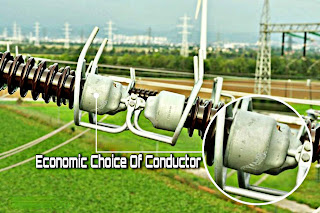Economic Choice Of Conductor in Transmission Line Design
Conductors used should have following electrical and physical properties:
- Chosen conductor must have high conductivity.
- In must have large tensile strength.
- It must have large corrosion resistance characteristics.
- It needs to have large melting point and good thermal stability.
- It has good ductile property.
Following conductor material are most commonly use for transmission line :
- Hard drown copper
- Aluminium
- Aluminium conductors steel reinforced (ACSR)
In india, ACSR Conductors are more commonly used. From 1990 onwards, America, Australia and few european countries starts using All aluminium alloy conductor (AAAC).
- AAAC consists of aluminium, boron, silicates etc. As a main component material.
Size of the conductor chosen depends on following factors :
- Length of the transmission line
- Voltage drop
- Load demand
- Voltage level
- Allowable temperature limit
- Current carrying capacity
- Charging current
- Losses in the transmission line
For a reference (constant) loss of energy, cross section of the conductor and itd weight is inversely proportional to the square of the voltage of the transmission line.
For higher voltage level, area of Cross section of conductor chosen is less.
Related Article:
- Choice of Voltage in Transmission Line Design
- Requirements Of Transmission Line
- Selection & Specifications Of Transmission Line
Value of charging currents depends on the voltage level. For higher voltage level, the value of charging current required is power.
Table 1, in general provides approximate dimensions, weights, resistance and breaking strength of ACSR as per BS215: Part 2, 1956
Also Read:
- What is Substation? And Function Of Substation
- Advantages & Disadvantages of Interconnected Power System
- Electrical Safety Signs and Symbols


I liked your work and the way in which you have shared this article here aboutAluminium Alloy 7075It is a beneficial and helpful article for us. Thanks for sharing an article like this.
ReplyDelete